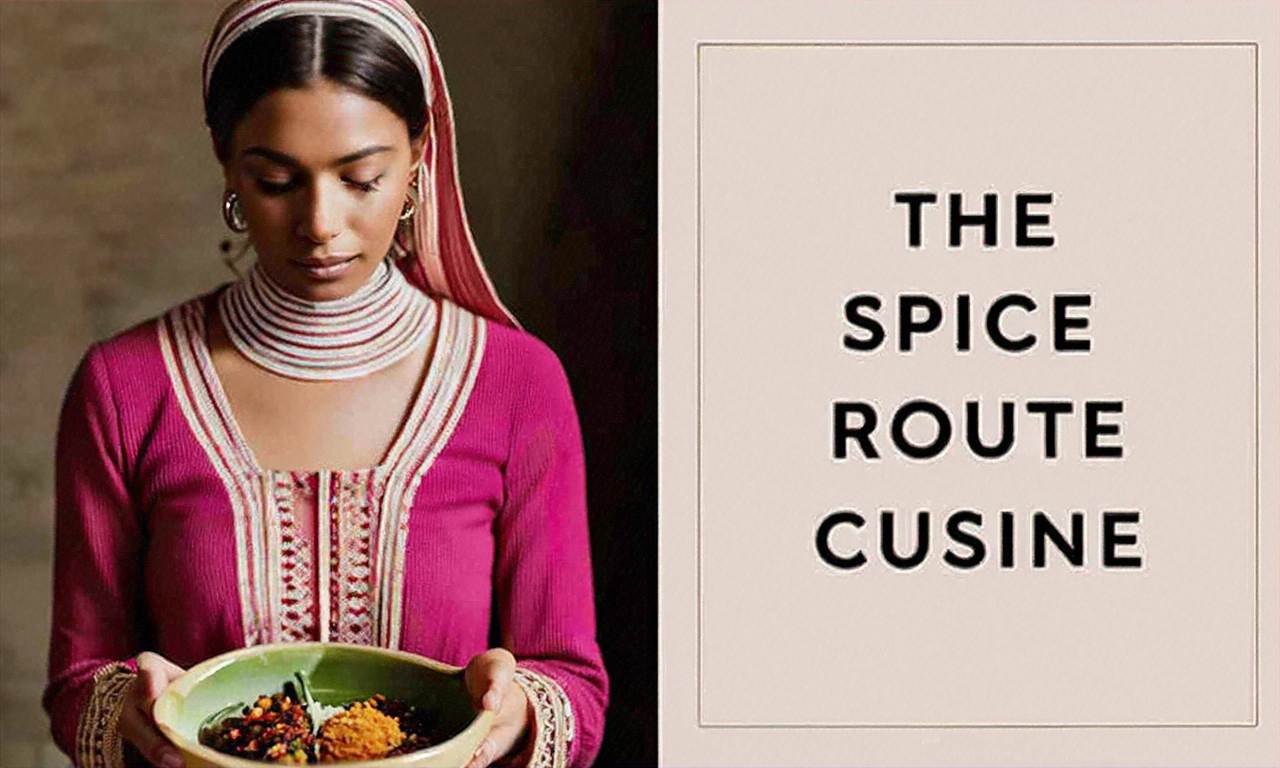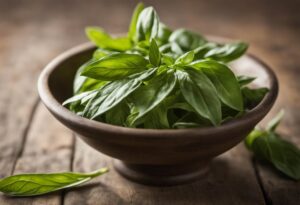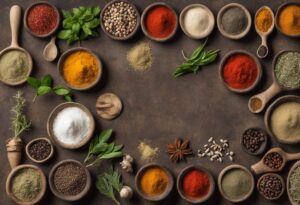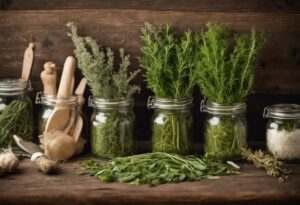The Origins of the Spice Trade
Spices have held an esteemed, almost mythical status throughout human history. Their aromas and flavors have brought excitement to cuisines across cultures for thousands of years. But how did these coveted spices from faraway lands first make their way into our kitchens and onto our plates? Their journey spans continents and centuries, shaped by humanity’s wanderlust and quest for new flavors.
The origins of the global spice trade can be traced back over 4,000 years to the ancient kingdoms of Egypt and China. As early as 2000 BCE, Egyptian texts make references to importing cinnamon and cassia from distant lands. China was also an early pioneer in the spice trade, seeking out seasonings like ginger, cinnamon, and pepper from India and Southeast Asia via overland routes.
But the origins of the lucrative, globe-spanning spice trade networks we think of today emerged a bit later, growing slowly at first. Arab traders are credited with first recognizing the money-making potential of spices around 1000 CE. Merchant ships from the Arabian Peninsula started regularly plying spice trade routes between India and the Near East. The demand for exotic spices like black pepper, nutmeg, mace, and cloves quickly grew in the courts and kitchens of Near Eastern caliphs and sultans. Soon trader caravans were crisscrossing Central Asia and the Near East with precious bags of spice, feeding the appetites of Cairo, Constantinople, and Baghdad.
The expansion of Islam brought the spice trade firmly into the domains of Muslim traders. The desire for spices to flavor food, impress guests, and display wealth and power fueled demand. Muslim trader networks connected spice producers in India and the Spice Islands of Southeast Asia all the way to the Mediterranean on complex trade routes across both land and sea, known today as the Maritime and Overland Silk Roads. Spice outposts sprung up in key port cities like Zanzibar, Calicut, Malacca, and Alexandria to handle the ships, camel trains, finance, and logistics required by booming trade networks.
The spice trade grew steadily in scope, scale, and profitability under Muslim traders in cities like Cairo, Damascus, and Venice. Soon, spices like pepper and cinnamon were in high demand across Europe. They were considered luxuries and display items of the wealthy in much the same way as silk fabrics and precious stones. The spice trade grew to connect much of the known world at the time, cementing key trade cities as cosmopolitan hubs of commerce and culture. As spices changed hands across different ships, caravans, and traders, they also transmitted ideas, ingredients, technology, and cultural influences between regions.
So while the spice trade grew gradually from early routes connecting ancient kingdoms, it was enterprising Muslim traders plying early Silk Road trade networks starting in the 11th century CE that really organized and expanded the lucrative global trade connecting spice producers to distant spice-craving consumers for the first time. Their commercial networks laid the foundations for Europeans like Columbus and da Gama to follow in seeking faster all-sea routes to prized spices starting in the 15th century. But the origins of today’s global spice exchange emerged from the camel trains and dhow ships of merchants pursuing spices across ancient trade routes centuries earlier.
The Most Coveted Spices Through History
Spices have been highly coveted throughout history, driving exploration, trade, cultural exchange, and even armed conflicts. Certain aromatic spices were particularly prized for their rarity, curative powers, and ability to transform and preserve foods before refrigeration. The spice trade shaped global cuisine by spreading ingredients, flavors, and cooking techniques worldwide.
Black pepper was one of the most in-demand spices during antiquity and the Middle Ages. Native to South Asia, pepper was rare and expensive for Europeans and became known as “black gold.” The spice trade along the Silk Road and other routes connected Asia to the Mediterranean, with pepper a top commodity. Its heat and ability to mask spoiled flavors made it essential for preserving meats. As a result, the appetite for pepper in Europe was nearly insatiable.
Cinnamon, derived from the bark of tropical evergreens, was another coveted spice early on. During the Roman Empire, Arab traders controlled the supply from South Asia, keeping markets in Europe and the Near East tantalized by its sweet, aromatic heat. Its rarity and exotic origins added to the spice’s mystique, with fanciful tales of cinnamon guarded by poisonous serpents.
Medieval Europe craved spices from the East like never before. Nutmeg, mace, cloves, cardamom and ginger were in high demand. Sugar also grew popular for sweetening foods and masking metallic flavors. The control of spice trade routes meant power and influence. Spice merchants in Italian city-states like Venice and Genoa accumulated tremendous wealth servicing this demand. The promise of precious spices even lured explorers like Columbus on perilous voyages across uncharted oceans.
Saffron emerged as the world’s costliest spice by weight, derived from the hand-harvested stigmas of crocus flowers. Europe’s appetite for it seemed limitless. The Mughal Empire and medieval Spain established saffron cultivation, which requires extensive manual labor during brief seasonal blossoming. Most saffron was imported to Europe across the Mediterranean by Arab traders who reaped hefty profits.
Vanilla became a coveted spice after the Spanish introduced it to Europe from Mexico. Subtle and sweet, it grew fashionable among aristocrats and bourgeoisie for flavoring confections, pastries and chocolate. Yet vanilla orchids proved nearly impossible to cultivate outside Mexico until the mid-19th century. Such scarcity kept vanilla extremely expensive, its flavor literally worth more than silver by weight.
The rich yet elusive flavors of these spices drove global demand and defined status in societies for centuries. Their high value sparked the interest of merchants, monarchs and explorers, many of whom risked everything chasing the promise of spice riches. The spice trade proved enormously lucrative but also unstable, susceptible to shifting politics, trade route disruptions and the vagaries of nature itself. Yet the European hunger for exotic seasonings seemed insatiable, forever altering cuisine and culture across continents.
How Spices Spread Along Trade Routes
The Spice Route: How Trade Shaped Global Cuisine
How Spices Spread Along Trade Routes
Spices have been highly coveted throughout history, not only for their ability to preserve foods and make them more palatable, but also for their medicinal properties and cultural significance. As such, complex trading networks developed early on to transport spices across continents along what became known as the legendary “Spice Route.”
The Spice Route was composed of multiple overland and maritime routes that crisscrossed Europe, Asia, and Africa. While many goods like silk, textiles, and precious metals were carried along these routes, spices were always among the most valuable commodities transported. Pepper, cinnamon, cloves, nutmeg, and ginger were considered exotic luxuries and status symbols. Controlling the Spice Route meant controlling the spice trade, which conferred tremendous wealth and power.
The origins of the Spice Route can be traced back over 4,000 years to the spice trade between Ancient Egypt and lands like India and Arabia. But it greatly expanded after the Roman conquest of Egypt in 30 BCE, when annual fleets were sent from Egyptian ports like Alexandria to source spices from India and Southeast Asia to meet growing Roman demand.
Maritime routes were the main conduits for the spice trade until the fall of Constantinople to the Ottoman Empire in 1453 CE blocked traditional overland routes from Asia to Europe. This loss of land access forced European kingdoms to seek alternate spice trade routes by sea and eventually fueled the Age of Exploration.
In the Middle Ages, Italian merchant-explorers like Marco Polo and Niccolo dei Conti traveled East along the Silk Road to China and Southeast Asia and returned with coveted spices like pepper, nutmeg, mace, and cloves as well as tantalizing tales of the Spice Islands (Moluccas). Their writings spurred interest across Europe to find a direct sea route to Asia and break the Arab and Venetian stronghold over the lucrative spice trade at that time.
The Portuguese made great strides in opening up maritime spice trade routes by pioneering sea travel down the coast of Africa and eventually to India. Emboldened by the immense wealth to be gained, Christopher Columbus set sail westward in 1492 seeking a quicker route than around Africa to the fabled Spice Islands. Instead, he landed in the Americas abundant in previously unknown spices like allspice, vanilla, and chili peppers which were then exported back to Europe.
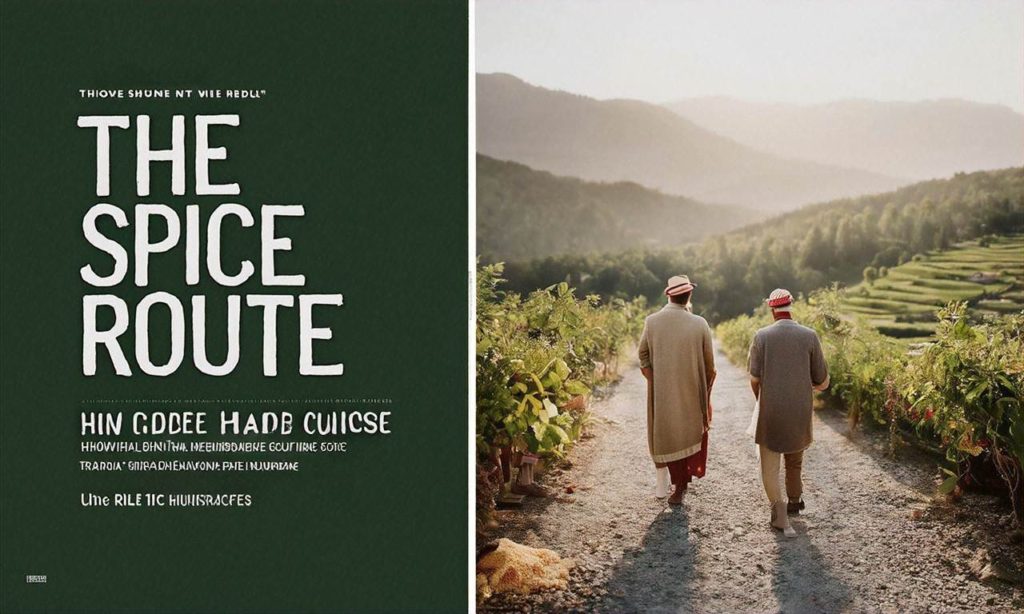
Soon after, Vasco da Gama rounded the Cape of Good Hope and continued north along the eastern coast of Africa before crossing the Indian Ocean to arrive on the southwestern shores of India in 1498. This feat established the first direct maritime route from Europe to India and opened up new opportunities for the Portuguese to dominate the spice trade in the 16th century after wresting control from Arab traders.
The Spanish, Dutch, and English soon followed the Portuguese lead and heavily invested in maritime exploration partly to find alternate routes to source spices from Asia and break the Portuguese monopoly. In the process, spices like nutmeg, mace, pepper, and cloves as well as New World discoveries like chili peppers, vanilla, and allspice gradually spread along trade networks throughout Europe, Asia, and the Middle East.
Through the spice trade, food cultures not only exchanged spices but also recipes, culinary techniques, and eating habits. This cross-pollination catalyzed new flavor combinations and diverse cuisines infused with the tastes of exotic spices. From spicy curries to complex spice blends to sweet and savory dishes balanced by spices, global cuisine was transformed by the historic passage of spices along trade routes.
The legacy of the Spice Route is still evident today in many enduring culinary traditions as well as the global popularity and high value still conferred to spices like saffron, cardamom, cinnamon, pepper, and vanilla. While spices may no longer fuel conquests and colonialism as in the past, the spice trade still spices up the global economy and remains a thriving multi-billion dollar industry centered in developing countries.
The Spice Trade and the Age of Exploration
The Spice Route: How Trade Shaped Global Cuisine
The Spice Trade and the Age of Exploration
The search for spices was a major driver of European exploration during the 15th and 16th centuries, an era known as the Age of Discovery or the Age of Exploration. As the spice trade grew more lucrative, European powers sought new sailing routes to the Far East to bypass Arab and Venetian trade monopolies. The desire for direct access to the sources of coveted spices like pepper, nutmeg, and cloves spurred daring voyages into uncharted seas.
The Fall of Constantinople in 1453 to the Ottoman Empire had cut off overland trade routes from Europe to Asia. European merchants and monarchs alike yearned for a sea route that would allow them to circumvent Ottoman taxes and fees. The promise of controlling the lucrative spice trade enticed monarchs like Prince Henry the Navigator of Portugal to sponsor naval expeditions down the coast of West Africa. These voyages gathered geographical knowledge and sailing techniques that would later enable Europeans to traverse oceans.
Spain also invested heavily in exploration efforts under Queen Isabella I and King Ferdinand II. In 1492, Genoese explorer Christopher Columbus set sail under the Spanish crown in search of an alternate route to Asia. Instead of reaching India as intended, Columbus landed in the Caribbean, encountering spices and flavorings like chili peppers, vanilla, and allspice entirely unknown to Europeans.
Columbus’ contact with the Americas opened the door for Spanish conquest and colonization. The Spanish soon built vast empires transporting silver from Mexican and Peruvian mines back to Spain. However, the even more valuable spice trade continued to elude them. Access to the Spice Islands remained the ultimate prize.
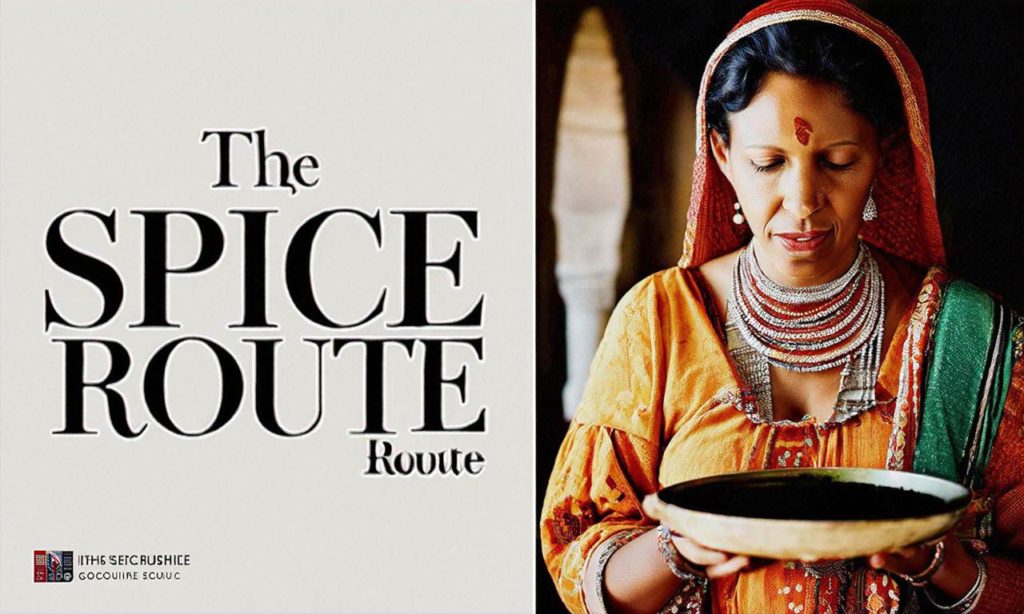
That breakthrough came under Portuguese explorer Vasco da Gama, who pioneered a route from Europe around the Cape of Good Hope to India in 1498. Da Gama returned from this revolutionary voyage with a small cargo of cloves, cinnamon, ginger, precious gems, and more. Having now chartered a sea route directly from Europe to India and the Moluccas (Spice Islands), Portugal positioned itself to dominate the spice trade through the 16th century. They established ports and trading posts across Asia, Africa, and South America, importing spices to Lisbon and excluding all other European rivals.
Eager to claim a piece of this commercial domain, monarchies like England and the Dutch Republic soon sponsored their own trade flotillas to Asia. Dutch navigator Willem Janszoon is credited with being the first European to land in Australia in 1606, while searching for new avenues to source spices.
The immense wealth generated by the spice trade spurred fierce rivalry between European powers. By the early 17th century, the Dutch emerged as a dominant naval and economic force following the founding of the Dutch East India Company, the world’s first multinational corporation. For nearly two centuries, the Dutch East India Company maintained almost complete control over the coveted spice trade, transporting Asian spices to Europe in exchange for silver, textiles, porcelain, silk, and other goods. They fiercely protected their monopoly by force, defeating Portuguese fleets to seize spice ports. Back in Europe, Dutch merchants sold spices and spice blends across the continent, introducing Asian flavors into new cuisines.
The quest for spices propelled European explorers across vast oceans, charting sea routes connecting continents. Discovery of the Americas introduced novel flavors to the Old World, while newly direct trade links with India and the East Indies brought Asian spices to European kitchens in unprecedented quantities. The spice trade was the first channel for substantial cultural exchange between Europe, Asia, and the Americas – an interchange that ultimately shaped global cuisine.
The Spice Trade’s Influence on Global Cuisine
The Spice Route: How Trade Shaped Global Cuisine
The Spice Trade’s Influence on Global Cuisine
Spices have not only added flavor to cuisines around the world, but have fundamentally shaped the development of global cuisine as we know it today. The spice trade opened channels for the diffusion and blending of culinary cultures across vast distances, profoundly influencing regional cuisines from Europe to Asia.
Many staple ingredients in cuisines worldwide originally came from spice trade networks stretching from Asia to the Middle East and Europe. Pepper, cloves, nutmeg, mace and cinnamon were highly coveted spices that made their way along trade routes like the Silk Road by camel caravan and old maritime routes connecting India and China to the Middle East and Mediterranean. Not only did these spices flavor food, but they were also used to preserve meat before refrigeration and mask smells and flavors in old or spoiled foods.
The intermingling of Arab, Indian and Asian traders and explorers along spice routes brought new ingredients, cooking methods and food preservation techniques. For example, Indian and Persian traders likely introduced lemons, rice and spinach to Mediterranean and European cuisines. From India, the technique of grinding spices into curry powder blends made its way through Arab trade networks, influencing cuisines as far away as Japan by way of Southeast Asia.
The spice trade also facilitated the global spread of popular ingredients like garlic, onions, lentils, peas, ginger and more. Traders and explorers transported spices, herbs, vegetables, fruits and nuts across oceans and continents, exposing societies worldwide to new flavors and ingredients. This transformed local diets and cuisines, creating unique fusions and regional adaptations of dishes.
The Columbian Exchange, the widespread transfer of ingredients, crops and agricultural knowledge between the Eastern and Western Hemispheres after 1492, was also made possible by explorers searching for efficient spice trade routes. It introduced staple global commodities like maize, potatoes, tomatoes, cacao and chili peppers, radically altering global cuisine.
The lasting legacy of the spice trade is the rich diversity of flavors, ingredients and cooking methods comprising the world’s major cuisines today. Signature spice blends emerged from trade crossroads like north India’s garam masala, or the Middle East’s baharat. Cooking techniques like stir frying traveled along Silk Road trade routes from China through Central Asia and the Middle East.
While globalization and modern trade have made spices more readily available worldwide, traces of the spice trade’s culinary influence originating centuries ago can still be found woven into cuisines across Europe, Asia, Africa and the Americas. The spice trade indelibly shaped the blending, diffusion and evolution of cooking traditions worldwide over millennia through cross-cultural exchange.
Spice Trade and Cultural Diffusion
The spice trade was not just an economic phenomenon, but also facilitated a rich cultural exchange between societies across Asia, Europe, and Africa. As spices moved along trade networks spanning continents, they brought more than flavor – they spread ideas, traditions, languages, religions, architectural styles, medicines, and other elements of culture.
The Transmission of Religions and Languages
The spice route was a conduit for the diffusion of major world religions. As traders traveled to buy spices, they brought their faiths with them. Buddhism spread from India to China and other parts of Asia along the spice trails. Muslim traders helped expand Islam into Indonesia, Malaysia and coastal parts of India. Christianity reached India’s southwestern coast via the spice trade, brought by colonizers and missionaries from Europe. The spice routes also enabled the spread of languages – words from Sanskrit, Arabic, Chinese, Portuguese, Dutch and English pepper local tongues across spice trading hubs.
Cultural Blending in Trading Ports
Thriving port cities along the maritime and overland spice routes became melting pots where cultures blended. Multi-ethnic populations lived side-by-side in these crossroads of trade, exchanging ideas and traditions. Cosmopolitan ports like Malacca, Goa, Kochi, Galle and Macau reveal cultural syncretism in their architecture, cuisine, language and arts – with motifs from India, Arabia, China, Portugal and Holland. The Eurasian Silk Roads also sparked cross-cultural fertilization, seen clearly in the cave temples of Dunhuang, filled with Indic, Persian and Chinese influences.
The Exchange of Medicinal Knowledge
The spice trade served as a channel for sharing medicinal knowledge between civilizations. Indian Ayurvedic treatments using warming spices spread abroad along trade networks. Chinese herbal medicines also reached new lands as traders carried botanical products. Southeast Asian traditional healing systems like Indonesian Jamu and Malaysian post-partum confinement practices absorbed new ingredients and remedies from Indian, Chinese and Arabic medicine brought by merchants. The quest for spices even drove European apothecaries to appropriate medical botany wisdom from the Orient.
The Spread of Cuisine
Of course, the spice trade profoundly shaped the foods and flavors found across the regions linked by spice routes. Chili peppers journeyed from the Americas (via Spain) to India and Southeast Asia. Black pepper, cloves, nutmeg and mace traveled from India and Indonesia to Europe, then the Americas. Arab traders introduced spices like saffron, cumin and cloves into North African and Spanish cookery. The Portuguese spiced up Goan cuisine with palm vinegar and coconut milk picked up from southern India. Through the spice trade, cooking techniques like stir frying also diffused from China along the Silk Spice Routes all the way to Turkey!
Shared Architectural Elements
Spice commerce led to the migration of artisans, architects and decorative motifs between trading centers. Temples, mosques, homes and other structures in cities like Goa, Malacca and Macau synthesize building styles from Europe, China, India, Arabia and native traditions. Decorative chinoiserie featuring Chinese scenes and ceramics also turned up on buildings in Dutch and British port settlements. Elaborate carved woodwork in “spice temples” across South China and Southeast Asia used by spice traders displays similar craftsmanship, symbolic imagery and construction techniques linked to the spice trade.
In shaping extensive cultural interchanges, the spice routes lived up to their name, seasoning societies across the world. The global trade in spices not only altered tastes in food, but also left an enduring imprint on many facets of cross-cultural expression. The shared heritage visible in religions, languages, arts, architecture and healing practices along historic spice routes stands as the most flavorful legacy of the lucrative spice commerce.
The Legacy of the Spice Trade Today
The spice trade may seem like a relic of the past, but its legacy continues to shape our world in profound ways even today. Many of the trade routes established centuries ago still form the backbone of modern shipping lanes and air routes that keep our global economy flowing. And the popularity of diverse cuisines incorporating spices from around the world shows how deeply the spice trade influenced what we choose to eat today.
The networks and connections formed by the search for spices laid the groundwork for our modern globalized world. Countries still trade many of the same prized spices that drew explorers across oceans in the 15th and 16th centuries seeking routes to the Spice Islands. Pepper, cinnamon, cloves, and nutmeg remain essential ingredients in both global and local cuisines.
While the European colonizers who dominated early spice trading initially controlled its distribution, today many former colony countries are leading exporters of these valuable commodities. Indonesia now produces 75% of the world’s nutmeg supply. India is the top exporter for chili peppers. And Vietnam has become the number one exporter of pepper, showing how global spice production and trade patterns continue to evolve.
The popularity of spices also continues to influence cuisine around the world. From traditional dishes that incorporate locally grown spices to fusion cuisine blending spice profiles from different cultures, spices add flavor, heat, and aroma to foods everywhere. Dishes like chicken tikka masala that combine spices from different regions reveal the lasting impact of the spice trade on what we choose to eat.
Even the ubiquity of once rare and treasured spices like black pepper shows the dramatic influence of trade routes first established in the search for spices. Peppercorn’s value once rivaled that of gold. But after enterprising European traders broke the Portuguese monopoly on the spice trade, black pepper became affordable and accessible for ordinary people and has remained one of the most commonly traded spices for over 400 years.
While bloody conflicts arose over control of the lucrative spice trade and tragic injustices were committed in colonized lands, we also inherited positive influences from this trade across cultures. Exchange of spices and the fusion of cuisines along trade routes facilitated sharing of ideas and techniques from different cooking traditions that continue to shape modern fusion cuisine today.
The spice trade era expanded global connectivity between distant regions and brought an influx of new flavors and ingredients into local cuisines. It left a legacy that includes intercultural diffusion of food, language, and culture that continues to affect societies worldwide. From the global popularity of curries to the ubiquity of chili peppers in global cuisines, spices first spread along trade routes forever transformed what the world chooses to eat, making the legacy of the spice trade an enduring part of global economic and cultural exchange.
Spices as Highly Prized Commodities Through the Ages
Since ancient times, spices have been some of the most valuable and coveted commodities in the world. Their rarity, vibrant colors, intense flavors and aromas, and perceived medicinal properties made them extremely desirable for royalty, the elite, and emerging middle classes alike. Many spices were worth more than gold by weight in some eras. The spice trade routes stretching from Asia to Europe and the Middle East reflected the enormous consumer demand for these seasonings that transformed food and drink.
Some of the most popular and expensive spices over the centuries included black pepper, cinnamon, cardamom, turmeric, ginger, cloves, and nutmeg. Pepper was used as currency at times in history. In certain periods, just one pound of nutmeg cost more than seven fat oxen. Wars were waged and empires rose trying to monopolize the lucrative spice trade. Spices were drivers of global trade, cultural diffusion, exploration, and even colonialism and imperialism as European powers vied for control of the supply chain.
So why were spices so highly coveted as commodities historically? Here are some of the main reasons:
Rarity and Exclusivity – Many valuable spices like cardamom, cinnamon, and pepper grew only in Asia and certain islands like the Moluccas. Limited supply with big demand drove extreme prices.
Vibrant Colors – Saffron and turmeric were incredibly expensive due to brilliant golden hues. These colors were associated with royalty.
Intense Flavors and Aromas – Cloves, pepper, nutmeg, and cinnamon all have very strong tastes and smells. They added great flavor power.
Medicinal Lore – Ginger, cinnamon, pepper and other spices were thought to provide numerous health benefits. People used them for wellness too.
Preservation Abilities – Spices enhanced preservation of meats and other foods before refrigeration. This made them essential for storage and travel.
Cultural Prestige – The elite’s tables were adorned with rare imported spices as status symbols of wealth, sophistication, and worldliness.
Religious Significance – Many cultures used spices like frankincense, myrrh, and saffron in sacred rituals, funeral rites, and offerings to gods.
In the Middle Ages and Renaissance eras, the wealthy upper class displayed their social status with lavish feasts using expensive imported spices. Royals and nobles were known for having their own personal spice boxes with various prized seasonings. Spices were also popular gifts between monarchs and elite families trying to impress each other. The spice trade thus fueled not just commerce but cultural diffusion.
Later on, rising middle classes in Europe also demanded more and more spices to emulate the extravagant lifestyles of royalty. This growing consumer market shaped global trade. Traders made huge profits meeting this demand by transporting spices from India, Southeast Asia and the Far East along land and sea routes – often referred to collectively as “The Spice Route” – stretching to the eastern Mediterranean.
So throughout history, spices commanded incredible value due to a mix of genuine culinary utility and elite social signaling. Their mystique and cultural symbolism persists to this day. Many traditional holiday foods from fruitcakes to mulled wines still incorporate exotic spices – evoking flavors and histories of ages past.
The Spice Trade’s Role in the Global Economy and Colonialism
The spice trade played a pivotal role in the development of the global economy and colonialism for centuries. As spices became highly coveted luxuries in Europe, the trade became tremendously profitable. This drove European powers to establish colonial footholds across Asia and the Americas in order to monopolize production and control spice trade routes.
The search for spices such as black pepper, nutmeg, mace, and cloves was a key driver of European exploration from the 15th century onwards. These aromatic spices were viewed as luxuries and status symbols amongst European elites. Yet spices also had preservative properties, making them important for food storage.
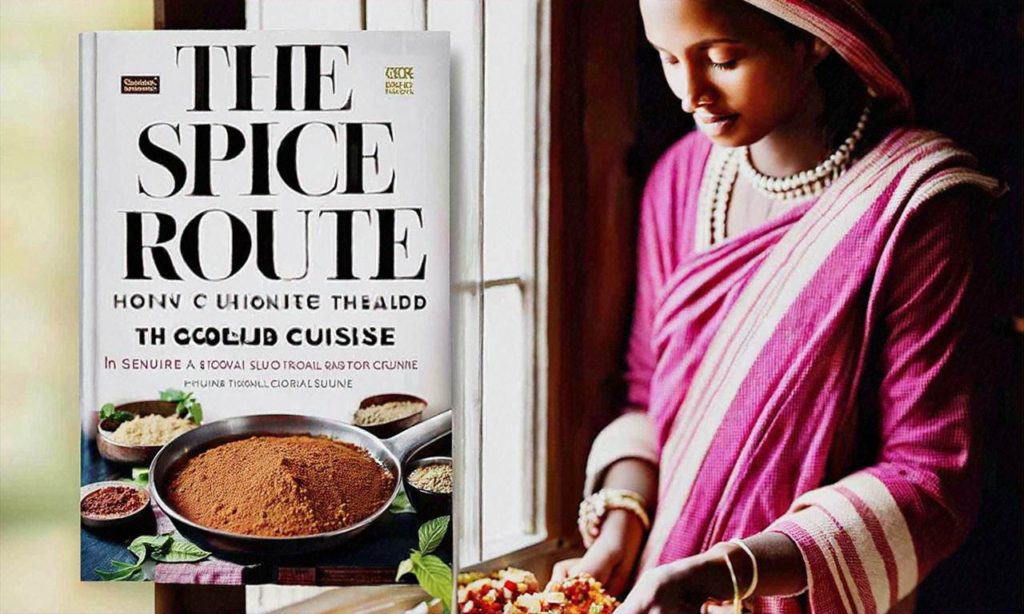
As demand rose, Italian city-states and Portuguese sailors established maritime trade routes to source spices from India, Southeast Asia and the “Spice Islands” (the Maluku archipelago in eastern Indonesia). This laid the foundations for Europe’s colonial expansion across Asia.
Spices as Drivers of Colonization
The immense profits from the spice trade motivated European powers to colonize spice-producing regions outright. In the 17th century, the Dutch East India Company established control over spice production areas in Indonesia, Sri Lanka and elsewhere. Other European powers soon followed suit. Britain took over India and parts of Southeast Asia, while France colonized areas of Africa, India and Indochina.
These colonies gave European powers monopoly control over the production and trade of valuable spices and other commodities like tea, cotton and sugar. Colonial administrations forced local farmers to grow cash crops for export back to Europe. This generated massive profits but disrupted local economies.
The Spice Trade and the Global Economy
The spice trade was an early catalyst for global economic integration and growth. As spices were shipped across Europe, Asia, Africa and the Americas, they connected regional markets. Spice revenues financed the establishment of the first multinational companies in history, including the Dutch and British East India companies.
These mega-corporations operated their own armies, navies and administrative bureaucracies. They were early prototypes of modern transnational corporations that drive today’s globalized economy.
The mass movement of spices across oceans and continents was an early manifestation of globalization. It brought Asia, Europe and the Americas closer together as markets became more interconnected.
However, the trade also caused conflict between European powers as they vied for control of production centers in Asia and trade routes. The spice trade was a strategic consideration in many European wars and political treaties during the colonial era.
Spices Become Mundane
While the spice trade may have declined, its legacy continued to shape global cuisine and economics. Former spice colonies like India, Indonesia and Malaysia remain major spice exporters today.
Yet spices have become more mundane as modern transport made them accessible worldwide. Technological changes in food storage reduced reliance on spices as preservatives. Nevertheless, the centuries-old spice trade pioneered the blueprint for today’s global economy.
The spice trade’s role in the global economy and colonialism was profound and far-reaching. Spices were drivers of exploration, colonization and trade between Europe, Asia, Africa and the Americas for centuries. While their value has diminished, the global trade networks they created laid the foundations of the modern globalized economy.
The Decline of Spice Trade Monopolies
For centuries, the lucrative spice trade was dominated by powerful trading monopolies that strictly controlled the supply and pricing of valuable spices like black pepper, nutmeg, and cloves. But by the 19th century, these once-mighty spice monopolies went into decline due to a combination of political, economic, and agricultural factors.
The Dutch East India Company (VOC) was one of the largest early modern trading monopolies. Through conquest and alliance, they established control over the production and trade of nutmeg, mace, and cloves in the Moluccas Islands of Indonesia. For almost 200 years, the VOC maintained a ruthless monopoly over the spice trade by restricting cultivation to small island groups they could easily control. They also waged wars against native rulers and other European powers to protect their monopoly.
However, political changes began eroding the VOC’s power. The Fourth Anglo-Dutch War (1780-1784) resulted in the loss of many VOC possessions and trade routes. Growing dissent and corruption within the company also weakened it. After over two centuries, the VOC collapsed in 1799 due to bankruptcy and inability to maintain their trade monopoly. Their dissolution opened the door for other colonial powers and merchants to break into the spice trade.
The Portuguese had dominated the pepper trade since conquering production regions on the Malabar Coast of India in the 16th century. Like the Dutch, they used crown-sanctioned monopolies, violence against locals, and wars with rival powers to control pepper and other Eastern spices for trade back to Europe.
But the Portuguese Empire went into decline by the 18th century, facing strong resistance to their rule in India. They lost territories to the British and Dutch, eventually ceding their pepper monopoly after defeat in the Anglo-Dutch Treaty of 1824. This allowed the British East India Company to take over the lucrative pepper trade instead.
The spice trade monopolies also declined due to increasing agricultural production outside their tightly controlled enclave regions. Nutmeg, mace, and cloves had been limited to small Maluku Islands for centuries. But in the 1770s, the French smuggled nutmeg plants out of the region during conflicts with the Dutch. This enabled cultivation to spread to other colonial holdings like Mauritius, Grenada and Réunion. Other European powers eventually acquired spice stock as well. This wider cultivation made spices more plentiful, driving down prices and the Dutch monopoly’s profits.
Similarly, the Portuguese had restricted pepper production to India’s Malabar Coast. But new trade routes enabled peppers from Southeast Asia to be exported as well. Peppers were soon grown across European colonial holdings in Asia, breaking the Portuguese stronghold. Wider availability made spices more affordable to more social classes in Europe and beyond.
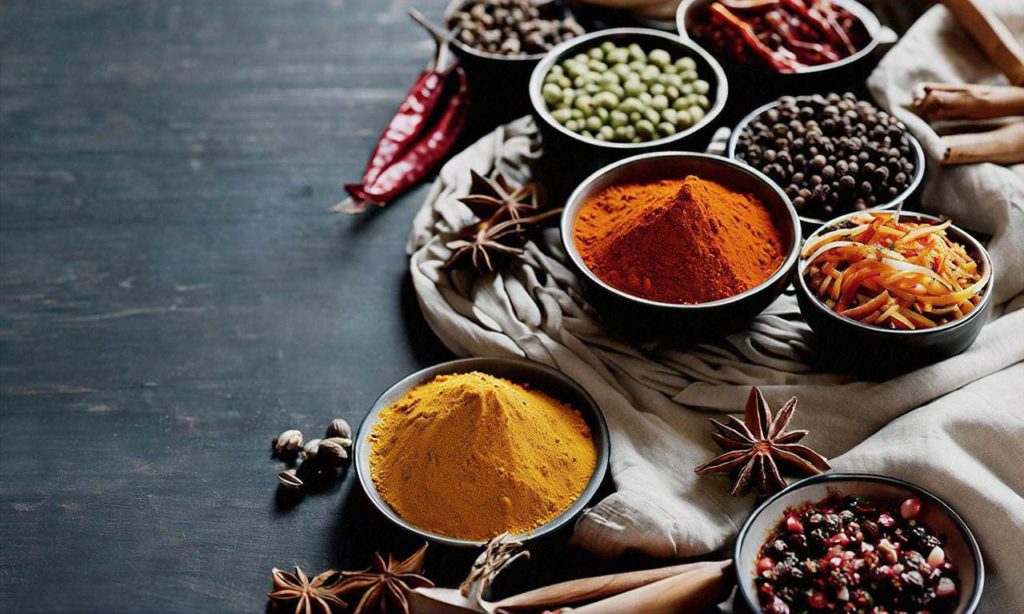
The powerful East India companies began to decline economically by the early 19th century, enabling their spice trade monopolies to be dissolved. Their strictly controlled business model couldn’t keep up with rising global trade and new demands. The British East India Company had its trade monopoly abolished in 1813. It lost administrative powers in India over the next decades, ceasing to exist by 1874. With the major players weakened, an era of spice trade monopolies that had shaped power and cuisine across the world for centuries came to an end. Their absence enabled open competition and innovation in the trade networks that had connected civilizations along the historic spice routes.
The once-mighty spice trade monopolies that had ruled global commerce saw their power decline due to political losses, agricultural developments outside their control, and inability to adapt to modern trade. As they faded, new merchants and systems rose to take their place, ushering in the modern era of spice trade. Their legacy continues today in the global trade connections and shared culinary traditions that were seeded centuries before along the routes of spices, silk, and other coveted goods. The rich yet violent history of trade monopolies struggling to dominate the spice trade shaped the world in ways that can still be tasted today.
